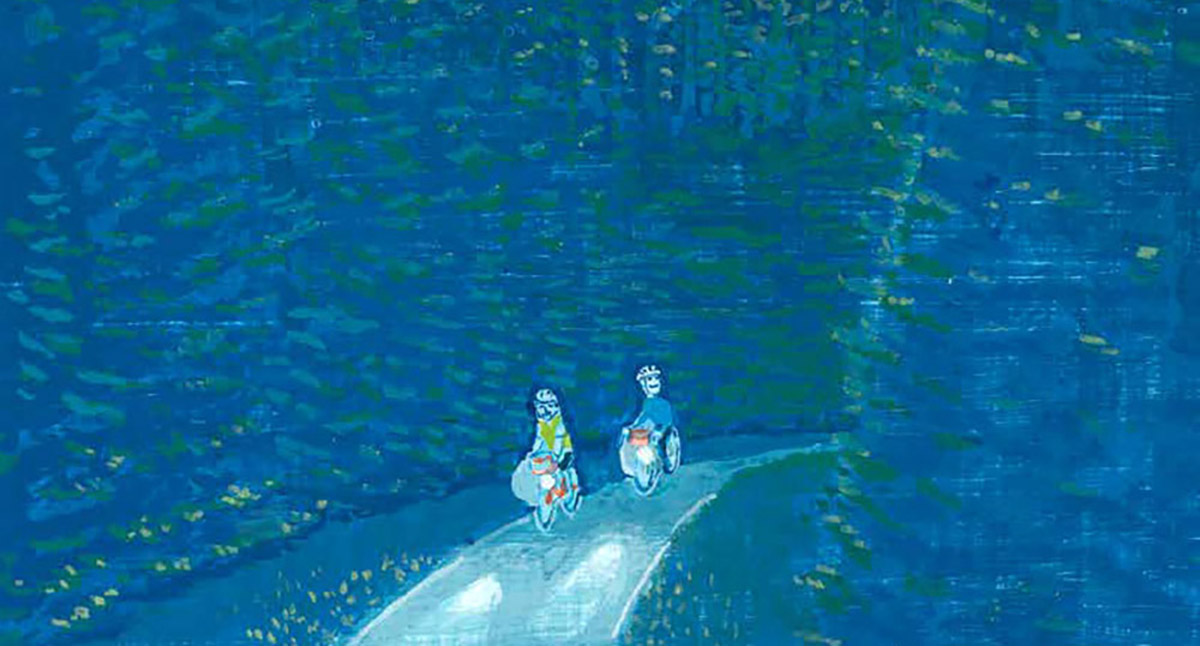Happy Earth Day!
More than half a century after the first Earth Day was celebrated in 1970, there has been much progress, and yet the world we live and ride in faces more challenges than ever before. At Rene Herse Cycles, we shy away from meaningless promises of becoming carbon-neutral at some point in the distant future. We don’t engage in performative actions like eliminating plastic from our customer-facing packaging, but not from our internal production processes. For us, our environmental impact is not a marketing issue, but a very real concern. As cyclists, we feel a deep connection to the natural world.
At Rene Herse Cycles, we consider the environmental impact of everything we do, at every step of every process. We are fortunate to have a dedicated team of employees who feel passionate about this. More than 90% of our employees’ commutes are made by bicycle. To further reduce our energy use, we’ve made ground shipping our preferred shipping method. We feel that, in most cases, bike parts don’t need to be flown across the country, when they can be transported much more efficiently by truck or rail. (We’ve also consolidated our ocean shipping to decrease the energy used there.)
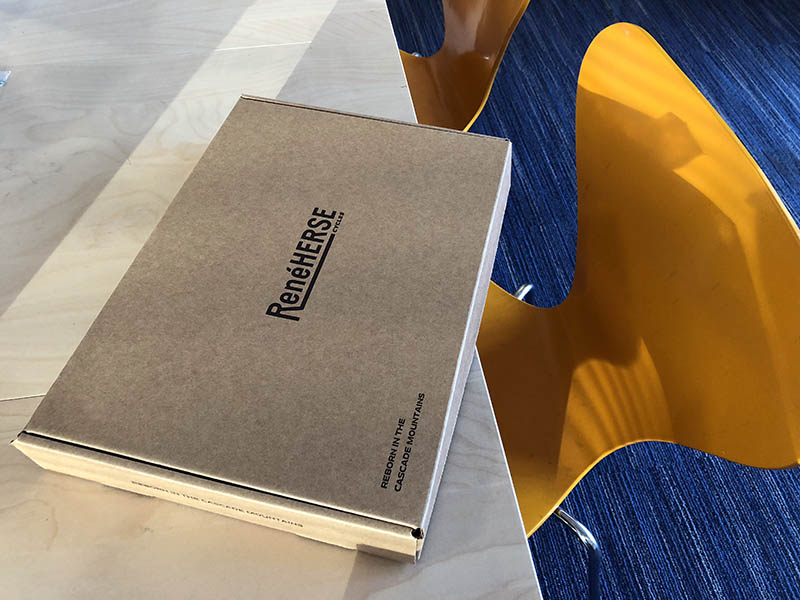
Our packaging balances the need for protection with our desire to reduce our environmental impact. Our cranks have always have been packaged in cardboard boxes with custom-made inserts that keep the parts from moving and scratching each other.
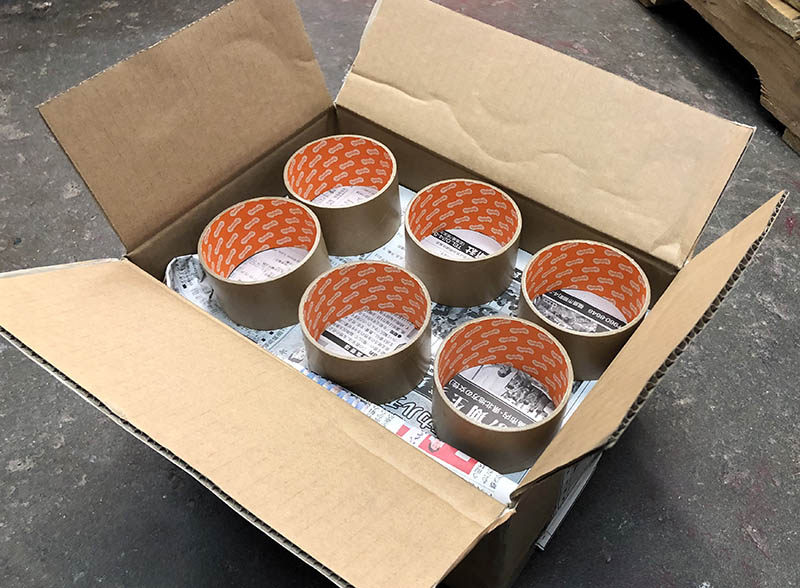
We use a multitude of box sizes, so each order is shipped in a box that is just the right size. That sounds like a minor detail, but the impact is huge: If the box is filled with the products you ordered, no empty space needs to be filled with packaging. Reducing the box size also means less fuel is used during shipping—with the added benefit that you pay less for shipping. When I get packages from big retailers, I find that many use only a few relatively large box sizes. Often there is more packaging than product inside.
At Rene Herse Cycles, we also reuse boxes, not just the boxes that our suppliers use for shipping products to us, but also boxes that we get with our personal purchases. That’s why you may get your order from Rene Herse Cycles in a box with an unfamiliar logo. Cardboard boxes that are too beat up to be reused are cut into stripes that we use to pad the boxes in which we ship our books. Combined, using ‘just-right-size’ boxes and reusing boxes has reduced our packaging by more than 70%. It’s allowed us to almost completely phase out bubble wrap and other hard-to-recycle packaging. It’s also reduced our garbage and recycling to almost zero. We are grateful to our employees who enjoy the challenge of finding the most efficient box for each order. They are really good at it!
We source our packaging locally or in the U.S. whenever possible, to keep the need for shipping to a minimum and support our local economies. Our cardboard boxes are made right here in Seattle. We don’t buy anything from the biggest packaging supplier, Uline, which uses its profits to promote an anti-environmental agenda.
Our products are also made near-by whenever possible. Our new Ultralight Handlebar Bags are made in a small one-person shop in California. Our cycling caps are also made in the U.S. The Kool-Stop pads we use in our brakes are made in Oregon.
The reality is that many bike parts need to be imported, because there’s simply no established industry locally or nationally that has the expertise to make them. When we choose suppliers, we look for quality, good working conditions, and low environmental impact, rather than low cost.
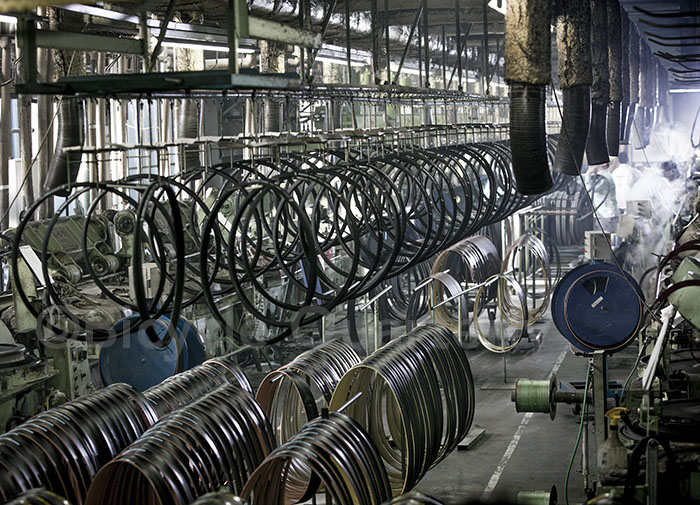
We work with suppliers who take pride in the skill of their employees and in the quality of their work. This means less waste, because there are fewer rejects. That’s a big issue that often gets overlooked: In today’s world, it’s often cheaper to throw out entire production runs than to hire skilled workers who stop the machines immediately if something isn’t right. I’ve been to factories where the reject bins were huge and overflowing… (Obviously, we don’t work with them.)
Well-run, clean factories also mean that partially finished products don’t need to be wrapped in plastic to keep them from getting dirty. It may look ‘eco’ to hang a tire on the shop wall without any plastic packaging, but this is negated if that tire has been wrapped in plastic again and again at every step of manufacturing and shipping. We’d rather use plastic once—for the finished product, to protect the tires from premature aging. In the future, we hope to find a better solution that equally protects your tires, but eliminates the only piece of plastic left in our production process. For small parts, we use plastic bags that were surplus and would otherwise have been thrown away. This way, they get used at least once…
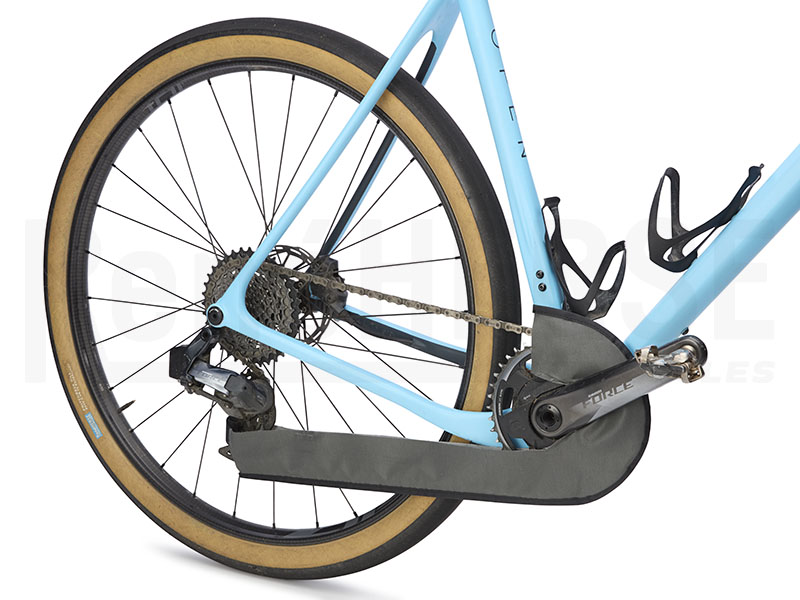
Many of our products are made from recycled or reused materials. Our Rene Herse × Velocio Ultralight Jerseys are made from plastic bottles that have washed up on Mediterranean beaches. Our Rene Herse caps are made with organic cotton. The Ostrich Chain Covers (above) are made from scraps left over during the production of other bags. Ostrich Disc Brake Pad Spacers are made from pieces left over from making bag stiffeners.
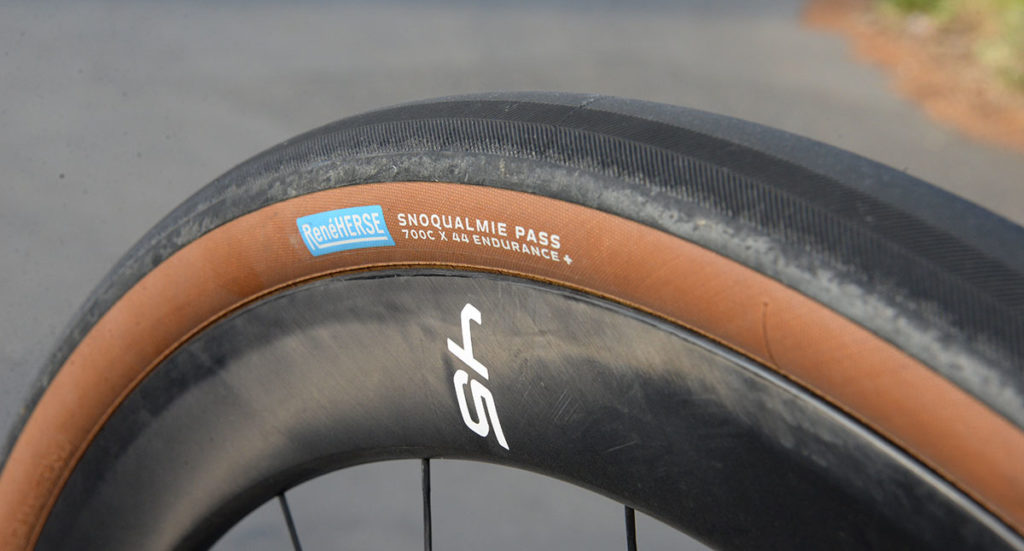
Our concern about our environmental impact starts when we develop our products. Creating long-lasting, serviceable parts is probably the biggest contribution we can make to reducing our impact—making stuff is responsible for 30% of all carbon emissions. (It also saves you money.)
For example, we design our tires with a little more rubber in the middle of the tread, so they last more than twice as long as similar high-performance tires from other makers. We reduce the tread thickness on the shoulders, where the tire doesn’t wear significantly. (Unless you ride only in circles on a skidpad.)
How does this work? You can wear down a tire only until there is about 1 mm rubber left, so a 1.2 mm-thick tread is almost worn out, a 1.5 mm tread lasts a certain mileage, and a 2.0 mm tread lasts twice as long. Doesn’t this make the tire stiffer and slower? We tested this, and there was no difference in speed between a new and a well-worn tire with thinner tread in the center. The center of the tread lies flat on the road, and the flex is mostly in the (thin) shoulders of the tread and the sidewalls. The extra tread adds only a few grams of weight. Thanks to the high-end materials, our tires are still lighter (and faster) than other ‘high-performance’ tires that don’t last nearly as long. As always, we don’t chase numbers like ‘lightest possible,’ but try to make our products ‘just right’ for everyday use, while still imbuing them with race-winning performance.
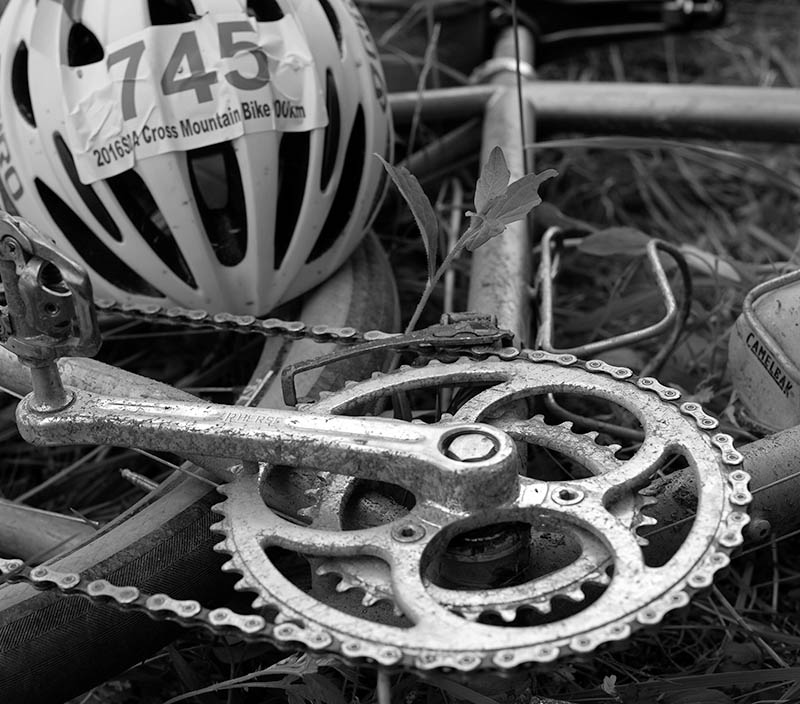
We’re committed to supporting our products in the long term. Our Nivex derailleurs are fully rebuildable, and we offer spare parts—and will do so for a long time. That’s not just an empty promise: You can still get chainrings for the first cranks that we made way back in 2011.
We also make our products backward- and forward-compatible. All our cranks are convertible to One-Bys thanks to our special spacers. Our 12-speed-compatible chainrings fit onto all our crankarms, including the earliest ones. We might sell more crankarms if we changed the design under the pretense of ‘innovation,’ but that’s not how we do things. We don’t want to sell you things you don’t need.
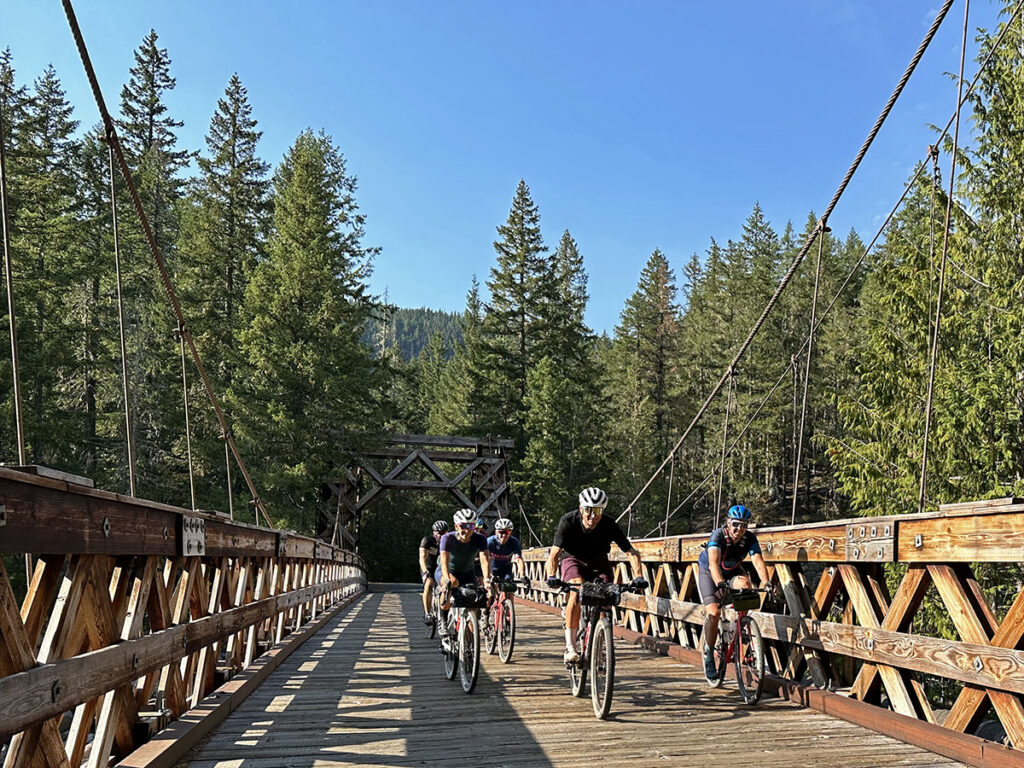
These are small things, but we believe that they don’t just reduce our impact, but also increase the enjoyment our customers get from our parts. We are a small company and intend to stay that way, so there’s no pressure to push for short-term increases in sales. Most of our sales are to return customers, and it’s our goal to make sure they keep coming back because they find that our products perform well, last a long time, and put a smile on their face. That’s good for them, good for us, and good for the environment.


